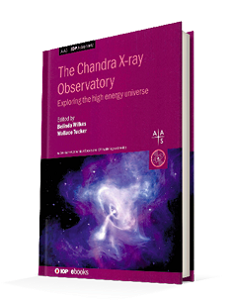The past few decades have been blessed with a number of major space astronomy missions designed to observe the universe in different wavebands and it seems that IOP Publishing has committed to covering the main ones with professionally edited academic texts such as this. The subject is the Chandra X-ray Observatory which, as the book’s subtitle confirms, was tasked with “exploring the high energy universe”. Launched in July 1999 as the Advanced X-Ray Astrophysics Facility (AXAF) with a mission design-life of five years, it is still making observations.
Following an introduction to x-ray astronomy and the mission, subsequent chapters describe the spacecraft and the many astronomical sources of x-rays it is designed to observe - from stars and planetary systems to supernovae, galaxies and supermassive black holes. As an academic text, it comes complete with the usual panoply of graphs and charts, equations and references, though unfortunately it fails to provide an index.
There are, however, a fair number of colour photographs which break up the text and help to illustrate a subject that is, arguably, somewhat esoteric. Indeed, the technical level of the multi-author contributions, and of course the high price, automatically restrict its market to libraries and individuals working in the field.
In common with other books in the same series, the volume uses a page-numbering system that ‘resets the counter to one’ for each chapter… but I won’t bore myself by repeating my opinions on this aspect and simply refer readers to reviews of sister books in the two previous issues of ROOM.











